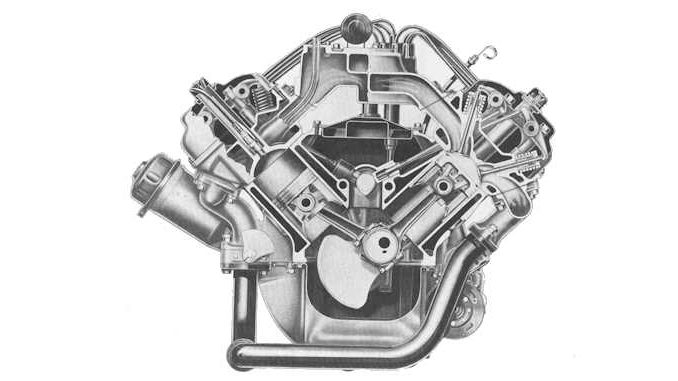
If you are a car fanatic, then you probably already know about all the hype in the 1950s and ’60s with the Hemi engine. Many people love the power that was created with the advent of this engine. Even though the Hemi engine is rare today because of increases in automobile and engine technology, it will always be revered as an icon in the automotive industry.
One of the main benefits of the Hemi engine is the design of the combustion chamber. The rounded chamber was significantly more efficient than the flathead engine model. In fact, the Hemi engine was so efficient that it was capable of producing even more horsepower than regular vehicles on the market during that time.
The flathead engine is basically a flatly-designed engine that is inexpensive to manufacture. On the other hand, the Hemi engine is a large engine that actually makes efficient use of not only the combustion chamber but also increases thermal energy use.
The Hemi engine’s combustion chamber was actually a hemispherical shape, hence the name. Because there is less surface area on the top of the engine, there is less of a chance that the engine will lose heat, which would decrease the engine’s performance. However, the flathead engines that have a simple design with a hole cut out in the middle to fit a spark plug is perfect for traditional lawnmowers simply because, as mentioned, they are easy to manufacture and easy to maintain.
The Start of the HEMI Engine
You may be wondering when the Hemi engine started production and in which vehicles they were originally manufactured in, although if you are a car buff then you probably already know. But Harry Westlake and Chrysler were the first ones to introduce the Hemi engine and Chrysler placed this engine into their Jaguars.

In fact, the V-8 version of the Jaguar in the early 1950s was capable of producing 180 horsepower. This was not only a milestone for the automobile industry, but that amount of power was practically unheard of during that time period.
There has also recently been a release of the Hemi engine in a Dodge vehicle. The Dodge Magnum in 2003 was released with Hemi engine heads that deliver more than 340 horsepower to the engine.
This 5.7 liter V-8 makes use of the famous hemispherical heads. The Dodge Magnum also uses two spark plugs for each cylinder, which also increases the engine’s performance.
All in all, the Hemi engine has long been a popular engine for automobiles and it is a symbol of one of the revolutions in the automobile industry that came about in the mid-1900s. The model and theory of the Hemi engine are still used today, but with even more power than before!
Pros and Cons
With the many advantages of the Hemi engine, it would seem like everyone should use it. Yet, that isn’t the case. Why? It has several disadvantages.
First, let’s talk about the many advantages. Hemis, by design, do a better job of burning all the fuel in the cylinder. Also, because of its design versus a flat head, the surface area is smaller and that means fewer heat escapes, plus peak pressure can be higher.
Also advantageous, is the size of the valves. With the Hemi engine placing the valves at the opposite sides of the head, there is more room for valves. This was better than the previous wedge-shaped engines with their combustion chambers in line with each other. The inline arrangement limits valve size. With the Hemi, the valves can be large and this leads to improved airflow throughout the engine.
The cons? Simply put, other engine designs have gotten better over time. While the valve size is an advantage, it is limited to having four valves per cylinder. This truth is that four slightly smaller valves per cylinder let the engine breathe easier than two large valves. Many new engines have a pentroof design to accommodate for more valve.
Also, working against the Hemi is the current desire to have smaller combustion chambers. The smaller chamber reduces heat loss during combustion and also helps shorten the rod travel time.
While these other advancements have their pros and cons as well, the Hemi engine is renowned for its reliability and impressive power output through its hemispherical design. While the new Hemis don’t have the same hemispherical shape that its predecessors had, it still relies on that shape to deliver its power.




